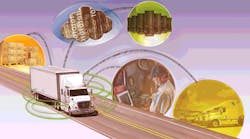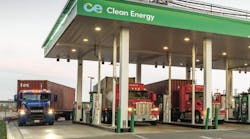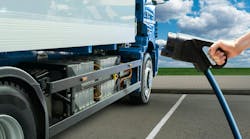In my last blog, I wrote about some of the problems that will continue to get worse if we don’t address critical infrastructure issues.
And as I mentioned in that post, not all is doom and gloom. Often great problems result in even great innovation.
Here are some practical ideas that can help with the infrastructure issue.
- Last Mile Delivery: As local roads and bridges deteriorate faster than the interstate system, final mile delivery service will become increasingly less practical for commercial vehicles. Non-commercial vehicles, ones that don’t need drivers with CDLs, will fill in. We are already seeing this happen with crowdsourced delivery systems like Roadie, Deliv, Amazon, etc. Non-commercial drivers using their own personal vehicles will result in a potentially limitless distribution network. One downside with this is the net result will be more, albeit smaller, vehicles to move an equivalent amount of freight. This will likely add to the congestion.
- Rail: While rail is facing similar infrastructure issues as trucking, general coast-to-coast rail is still performing well. Rail has the ability to quickly ramp up capacity. As the road infrastructure continues to decline in quality, more bulk freight will be carried by rail. The potential issue with rail is the time to transit. However, the movement to predictive consumer behavior, supported by AI, will allow for pre-planned consumable resupply in a timely manner.
- Drones: In one form or another, drones will continue to advance and find their place in public. UPS, DHL and Amazon are some of the early adopters of drone technology in a variety of different ways. Drones are not impacted by road conditions nor do they contribute to the deterioration of roads. An increase in drones will undoubtedly lead to other regulations regarding airspace.
- Vehicle Automation: As the capability of vehicle automation (at lower levels on the automation scale) accelerates, road striping and signage will no longer be an issue. Finite GPS positioning combined with a visual AI system is being tested as a way to ensure vehicles stay on track regardless of the physical condition of the roadway. Future advancements in AI will also allow vehicles to avoid road hazards such as potholes, construction and deteriorated bridges. That said, none of these fleet conversions happen overnight so the corresponding changes will need to be carefully coordinated.
Here’s a brief look at some “moonshots” that may help with the infrastructure issue.
- Hyperloop: While in its infancy, the Hyperloop model has made substantial strides. If the theoretical speed of 750 MPH can be achieved — we are already halfway there — then we will be able to move people and freight from Los Angeles to New York in less than four hours.
- Privately Funded Infrastructure: Private funding is one way to reduce dependence on government spending to improve the infrastructure. Domino’s Pizza, as part of a marketing campaign, is fixing a limited number of potholes and road cracks throughout the country. The Boring Company, an Elon Musk company, is developing its own underground system and the company has reached an agreement with the City of Chicago for a tunnel between downtown and O’Hare airport.
- Hypersonic Craft: Boeing is developing a hypersonic aircraft that can traverse the world in a matter of hours. These vehicles will operate at the edge of space and will be common in the not too distant future. While initially targeted for moving people, it may eventually transform into a rapid freight-moving platform.
- Autonomous Vehicles: It seems inevitable based on current developments that we will eventually achieve Level 5 autonomy, which is full autonomy. This will result in a sharing of vehicles pools in metro areas as well as fewer vehicles in heavily congested areas.
- 3-D Printing: The ability to purchase and print your own products may actually offset potential congestion issues. Today there are concrete printers that can “build/print” a house in less than a day. 3-D printing will result in less material that has to be moved from coast to coast and potentially less heavy construction equipment on the roads.
Whether practical or futuristic, there are ways to deal with the problems in our nation’s infrastructure. In the end, infrastructure current issues and potential solutions will result in increased costs on all products. None of the solutions to the infrastructure problem are cheap, and the costs will be passed throughout the supply chain. However, we don’t really have the option to do nothing. Addressing these problems/challenges need to be practical and no political.



